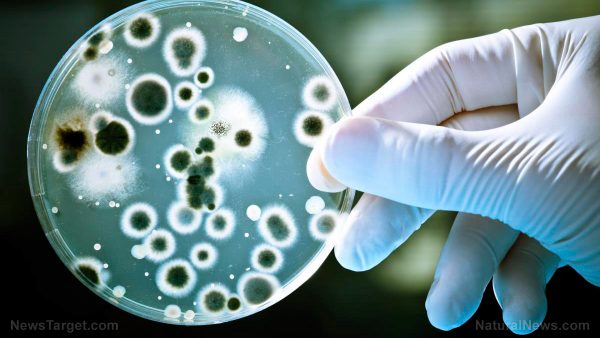Experts warn that the amount of drugs flushed into our rivers and lakes will increase 65% by 2050
05/09/2018 / By Tracey Watson

There is no doubt that pharmaceutical drug use is on the increase globally. In addition to the detrimental effects the use of such drugs have on our health, their distribution also causes widespread harm to the environment.
A study presented recently at the European Geosciences Union General Assembly, found that if urgent and drastic measures are not taken to reduce consumption of chemical medicines, the concentration of such drugs in freshwater lakes and rivers will increase as much as 65 percent by the year 2050. This poses numerous risks to the health of fish, frogs, lobsters and even humans.
Flushing it down the toilet
How do these drugs end up in our waterways? For years people were taught that the safest way to dispose of excess medications was by flushing them down the toilet, and although this is no longer advised, many people still continue to do so. In addition, though we might not be aware of it, our bodies release these drugs when we urinate. Healthcare facilities also flush medications directly into lakes and rivers.
As reported by The New Republic, research has confirmed that chemical drugs have detrimental effects on all sorts of wildlife and ecosystems when they enter our waterways. Even very small amounts of estrogen, for example, can disrupt the hormonal balance of male fish, causing them to develop eggs. (Related: Pharmaceutical drug contamination of waterways threatens life on our planet.)
A nationwide study conducted by the U.S. Geological Survey in 1999 and 2000 found low levels of pharmaceuticals—including antibiotics, hormones, contraceptives and steroids—in 80 percent of the rivers and streams sampled. According to Citizens Campaign for the Environment (CCE), the effects of constant, low-level exposure of pharmaceuticals on ecosystems and humans are uncertain, though “possible health concerns include hormone disruption, antibiotic resistance and synergistic effects.” And antidepressants, says CCE, can “alter the behavior and reproductive functions of fish and mollusks.”
Study predicts a 65 percent increase in fresh water drug contamination by 2050
Researchers from the IHE Delft Institute for Water Education in the Netherlands, set out to predict just how much the problem of drug contamination of fresh water is likely to increase by 2050.
To analyze the problem on a global scale, they tracked the levels of a painkiller used commonly around the world called diclofenac.
Both the European Union (EU) and the U.S. Environmental Protection Agency (EPA) have identified diclofenac as an environmental threat, and its prolific use in the treatment of livestock has already led to the collapse of vulture populations in South Asia.
The research team discovered that over 10,000 kilometers (6,200 miles) of the world’s rivers contain levels of diclofenac which exceed the 100 nanograms per liter stipulated on the EU watch list. (Related: Our drinking water contains massive doses of prescription drugs.)
The researchers believe that the high levels of diclofenac mirror the levels of other commonly used pharmaceutical drugs. (Related: Learn more about the effects of prescription drugs at Medicine.news.)
Is there a solution?
EcoWatch notes that even in the United States water treatment plants are only capable of removing 50 percent of prescription drugs from the water supply. In less affluent countries in Africa, Latin America and Asia, the infrastructure required to filter out these drugs is either prohibitively expensive or unavailable.
For this reason, upgrading water treatment plants is not a feasible solution to curbing this problem.
“We found out that technological improvements alone will not even be enough to recover from the current concentration levels,” warned Francesco Bregoli, one of the study’s authors. “If a substantial consumption reduction is not implemented, a large part of the global river ecosystems will not be sufficiently secured.” [Emphasis added]
Sources for this article include:
Tagged Under: Big Pharma, chemical medicines, clean water, contaminated water, dangeorus medicines, dangerous chemicals, diclofenac, drugs, Ecology, environment, food supply, freshwater, global river ecosystems, Prescription drugs, toxic water, Treatment Plants, water purification, waterways, wildlife



















